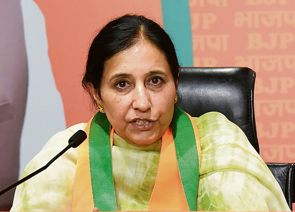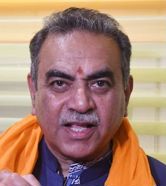
Dr Priyadarshi Ranjan
India has the dubious distinction of being the diabetic capital of the world. There were estimated 72 million cases in 2017. The incidence is expected to double to 134 million by 2025. The prevalence of hypertension, especially among young Indians, is also on the rise. While the government and the health-care authorities have woken up to these worrying numbers, a major outcome of these two diseases still lacks visibility. Renal failure is a growing cause of premature death in India. Compared with 86,000 renal failure deaths in 2003, the number has increased to 136,000 in 2015. Diabetes and hypertension today account for 40 to 60 per cent cases of chronic kidney disease (CKD). For this growing number, a kidney transplant is the only solution.
A kidney transplant is required when someone develops CKD, usually caused by longstanding diabetes or hypertension, infections and inflammations of the kidney, nephro toxic drugs, polycystic kidney, congenital anomalies or neglected kidney stones. Symptoms include swelling of eyes and feet, nausea, fatigue, breathlessness and decreased urine formation. In such situations, which is medically confirmed by small-sized kidneys on ultrasound and raised serum creatinine levels, patients require either dialysis or a kidney transplant to save their life.
How to decide about the donor?
Donor could be a relative (usually a family member) or a deceased (cadaver) donor, usually victims of accidents who become severely comatose (brain dead) and family wishes to donate their organs.
Who can donate a kidney?
According to the human organ transplant act of India, parents, siblings, spouse, children, grandparents and grandchildren can readily donate a kidney to their loved one and are classified as near relative. The other relatives such as in-laws, cousins and uncles etc can also donate provided the genuineness of relationship is approved. The law also has a provision of strong emotional attachment with donor (emotionally related) as well which is strictly scrutinised by a government approved authorisation committee, before such transplants can be undertaken. The law strictly prohibits and punishes for money exchange or organ commerce or any other threats towards the donor.
Is the outcome of live donor transplant different from cadaver donation?
The kidneys transplanted from a living related donor tend to have a longer life span in terms of number of years (20+/-8 years, median graft survival) and have less chances of rejection, rather than a deceased donor kidney(8+/-4 years)
Which one is better living or deceased?
It is always better to have a transplant whether living or deceased. If given a choice the graft survival is always better in a living donor kidney transplant.
What options do I have if my donor’s blood group does not match with me?
Such patients can opt for a paired swap kidney exchange transplant by registering themselves on the ikidney app, or else ABO incompatible kidney transplants have now become a reality in India. We can now transplant with the same family donor, even without matching the blood group, with excellent outcomes.
Will donors' life be affected after
donation?
Long-term studies in the US and UK and other European nations in millions of living donors have not found any significant rise in death rates or any other life-threatening disease due to donating a kidney. If we carefully choose the donor and strictly carry out all checks then chances of any subsequent problems to the donor are minimised. The technique of donor surgery is quite advanced now by laparoscopy and robotics, and hence the previous few morbidities of open surgery are now eliminated. There is a strong donor screening and donor follow up programme as well, which is periodically conducted every year for a healthy life for of a kidney donor.
Will life be normal after a transplant? What is the success rate?
Successful outcome in kidney transplant is excellent in today's date with minimum morbidity (close to 100 percent). Success is defined in two terms namely- The life of the kidney(graft survival) and the life of the patient (patient survival). Graft survival mostly depends on the quality of the donor kidney, recipients' lifestyle and follow up after transplant, attending transplant precision clinics and his medication adherence. If patients adopt a healthy lifestyle and are in regular follow up with their transplant surgeon, they are likely to live for decades together with a healthy kidney.
How is a robotic transplant different from a traditional surgery?
Robotic kidney transplant is a modern and revolutionary way of doing a kidney transplant. However, the expertise is still limited to a few specialised centers. In the past, the kidney transplant surgery was done by 30-cm-long incision which had many problems such as pain, infection, hernia, blood loss, poor healing and high analgesic requirement after the surgery. The incision was usually a cosmetic challenge as well to the younger patients. Now with robotic surgery the incision is hardly 5 cm and has minimal or no blood loss, hardly any pain, less analgesic requirements and an excellent recovery. Most of the patients are discharged in a couple of days and usually have good recovery and kidney function.
—The writer is senior consultant, urology, robotics and kidney transplant, Fortis Hospital, Mohali
Why transplant should be preferred over dialysis
Studies have clearly established that the life span is much greater after a transplant rather than dialysis. One third of the patients who are on dialysis die every year, due to accelerated cardiovascular heart disease, stroke, infections and various metabolic complications, despite best-quality regular dialysis. Financial losses are huge for dialysis as against the notion that a transplant is expensive. Studies clearly say that people on dialysis tend to spend much more on treatment rather than if they actually receive a transplant.
What precautions should be followed after a transplant?
Patients need to be monitored for keeping a good kidney function, prevented from infections. They should also be monitored for minimum long-term side effects of immunosuppressive medicines given after transplant. There is a specialised protocol TransCare which should be followed. It includes specialised labs, specialised fitness modules to check the side effects of muscle and bone weakness caused by steroids, wellness clinics for transplant nutrition/ eye check-up/ sugar check-up etc and transplant precision clinics so as to have the best outcomes after the transplant surgery.



























